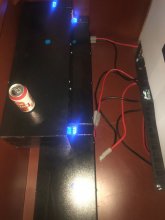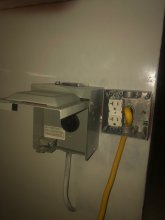tanoshimini
Solar Enthusiast
- Joined
- Mar 28, 2021
- Messages
- 110
That’s a variation on the same theme I’m looking into: Basically some sort of resistive silicone heating mat. @Will Prowse recently did a video on some reasonably priced ones, designed to heat waste-water tanks in RVs and boats. Those shake out to ~$35/ea. and are self-regulating. The ones that are being sold specifically as battery heaters are 2-3x the price, which seems ridiculous. I was looking into these 12v/25w silicone heating mats and thinking of putting 4-5 of them, wedged between pairs of modules. The casings on the modules are steel and should distribute the heat well. I bought a set and will do some tests before doing them all.I saw a video of some guy in Northern Vermont that uses a seedling mat to heat his bank. He has a wooden box enclosure with 2" of blue board. He has it rigged to turn on automatically, and it draws about 500wh per day.
I doubled-up the 1” foam, so I have 2” all-around, same as buddy. (I used 1” because it made it easier to fit around some of the internal gusseting in the boxes.) The XPS foam (blue or pink board) has a smidge better R-value than the EPS foam I used, but doesn’t have a radiant barrier. I’m curious to see how well it works out, too.I'm curious what draw will be for a metal box and 1" of foam.
I bought mine from Battery Hookup, which is in Bensalem, PA — ~50mi (~80km) from our current house in Delaware. I could easily take 16 at a time using our little diesel Colorado pickup, and I avoided all of the shipping charges, which would have increased the cost of the pack considerably. They loaded them right into the back with the forklift; super simple.Also, do you mind me asking where you got these batteries from? I'd like to buy some from a local company as well, but I feel like I'm grasping at straws.
I’d picked up a 12’ (~4m) tandem-axle utility trailer last month, and then built four of the batteries directly upon it, as I would not be able to move them at all once they’d been assembled. We hauled the first four up to Maine this past weekend, and I was able to pluck them off the trailer with our telehandler (Bobcat V723) and some pallet forks. All of this was theoretical up until that point, but everything went smoothly and I was able to reach in and pluck them all off in under 20 minutes; no drama. I was relieved that I didn’t have to disassemble anything in just to unload them.









